DRAG: A Punishing Racer
As popular hits like the GRID series, the Project CARS series, the Formula 1 series, and the DIRT franchise have made an impact on gamers on what racing is like in the real world, none of them hit quite as hard as DRAG. While the former titles mix a combination of realism peppered with a dash of arcade, I could argue DRAG takes all the arcade BS out and presents a formula that I’ve never seen in a racing game before. It’s almost completely realistic, brutal. Heck, for all I know it could be a complete simulation experience; I’d have no idea since I’m not a real-life racer. Per the description of the game on Steam:
DRAG introduces next generation 4CPT vehicle physics (4-way contact point traction technology) and a damage model that allows for competitive multiplayer wheel-to-wheel racing in a rallycross fashion.
So start your engines and strap on your seatbelt; you’re going to be here for a while.

Ever had a tire pop off one of your vehicles in a racing game? It’s quite easy for the same to happen in DRAG. Steer for just a little too long or a little too far, your vehicle will spin 180 degrees, and more than likely you’ll hit the out of bounds mark, forcing you to either quit or restart. Even if you don’t hit out of bounds, you will probably be off-track and lose precious seconds on the clock. And even if you managed to stay on track, you still lost some valuable milliseconds from reaching that silver medal. No, don’t even bother trying to go for gold; unless you’re ready to grind three or four hours on a 30-second course, it’s a laughable thing trying to reach the finish line under 28 seconds rather than 29.3. Even the developers have commented on this on the Steam store page:
DRAG is not a simple arcade racer thus very hard to master. Some of our beta testers have been playing DRAG for 150+ hours already and have not yet completed the singleplayer mode.
It’s an incredibly delicate balance of lightly pressing the gas, using the brake when going around corners, handbraking for the very sharp turns, and putting just a slight amount of pressure on the analog stick either left or right. Drive just 30 MPH over some pebble or hill, get ready to fly in the air, and twirl around in a spiral while you’re at it. It’s a challenging, yet rewarding session, so long as you make at least bronze. You catch my drift?
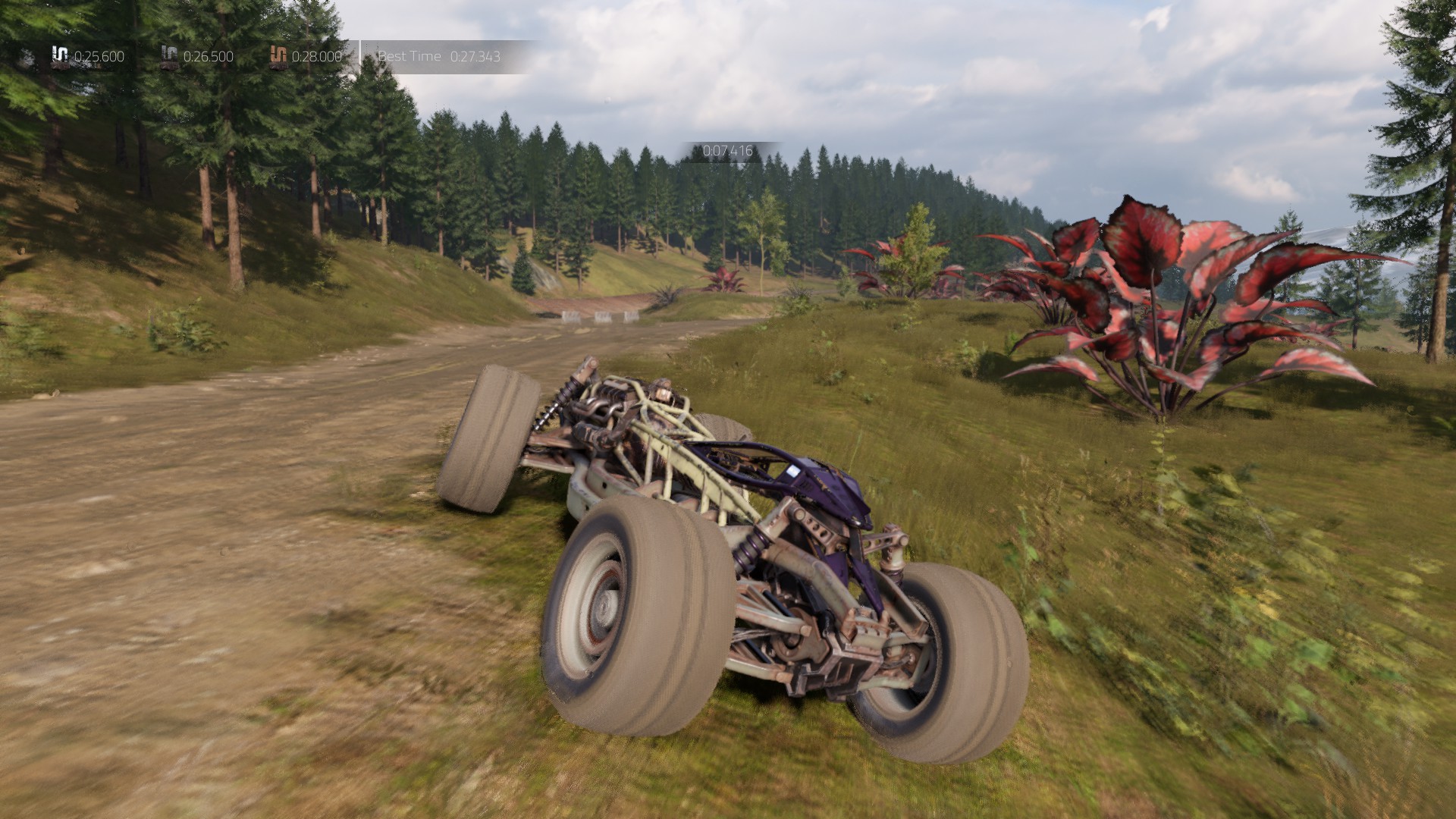
Back to when you lost a tire. If you’re playing online, you’re going to drive around like that for the rest of the race. Hit another obstacle, and a second tire will blow off. Get ready to lose a great amount of speed, and handle a half-assembled vehicle that’s much more difficult to manuever. Something tells me some monkey got in there when installing the tires; he gave the nut lug a gentle twist and said, “Yup, that’s good enough!” Because all it takes is a gentle nudge against a wall, and the tire falls off.
What have we got going so far with Early Access? Three zones:
- a forest-like environment that looks like it’s set up high in the mountains, complete with exotic plants and puddles of mud
- a second biome that looks almost the same as the first, albeit the dirt road has been replaced with pavement and the sky looks slightly more sunset-y
- a third that’s set up high above winter-themed mountains, with a post-apocalyptic dirt road where the bridge constructors said, “You know what, even though this road isn’t finished, we’re going to leave it half-baked to make it difficult for whoever drives this.”
We’ve also got two different vehicles. How exactly I can describe what these vehicles look like, the best description I can come up with is that they sort of look like semi-Monster trucks. They don’t even have names. One vehicle is heavier than the other; other than that I’m not sure how they differ in stats.
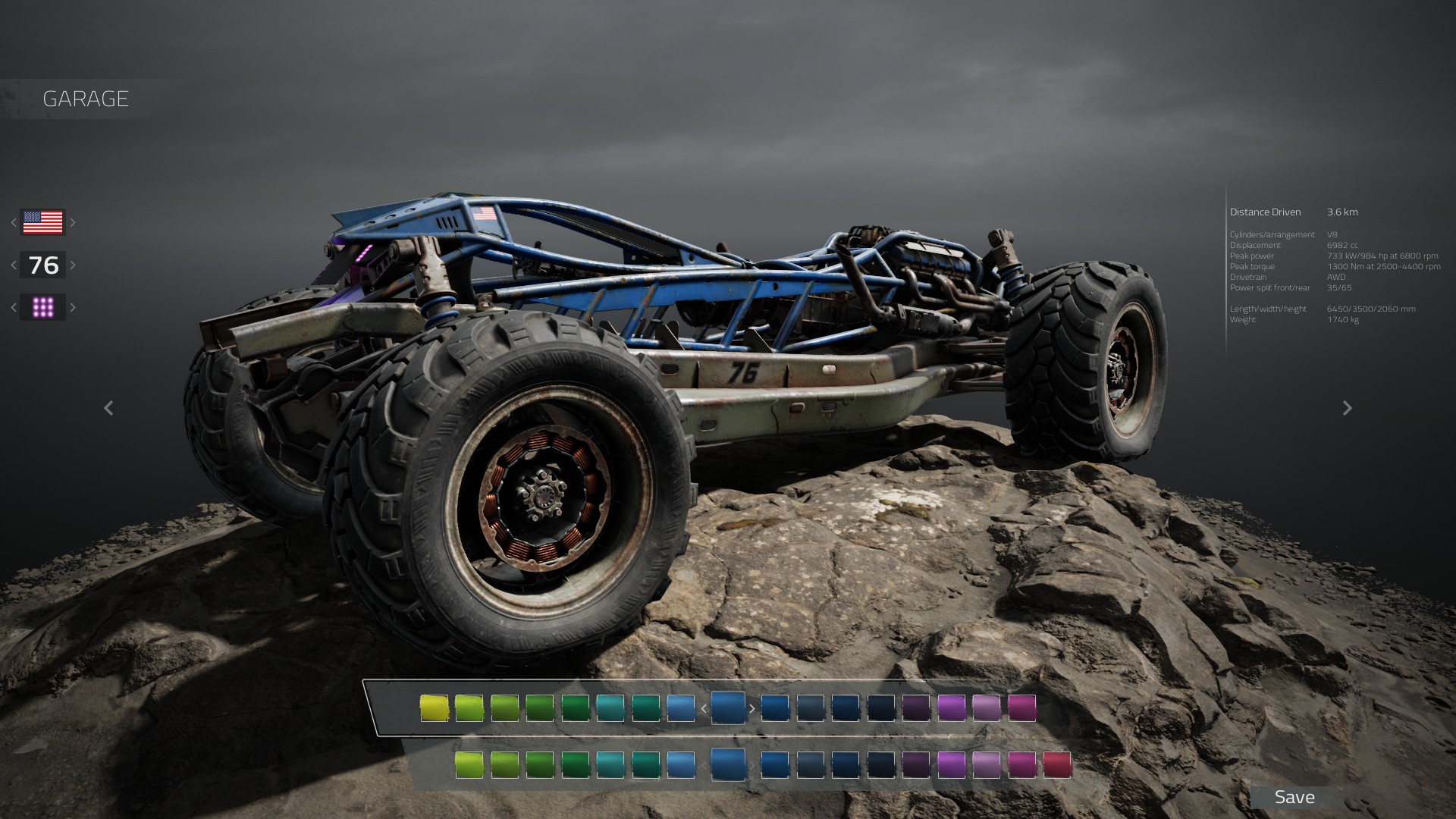
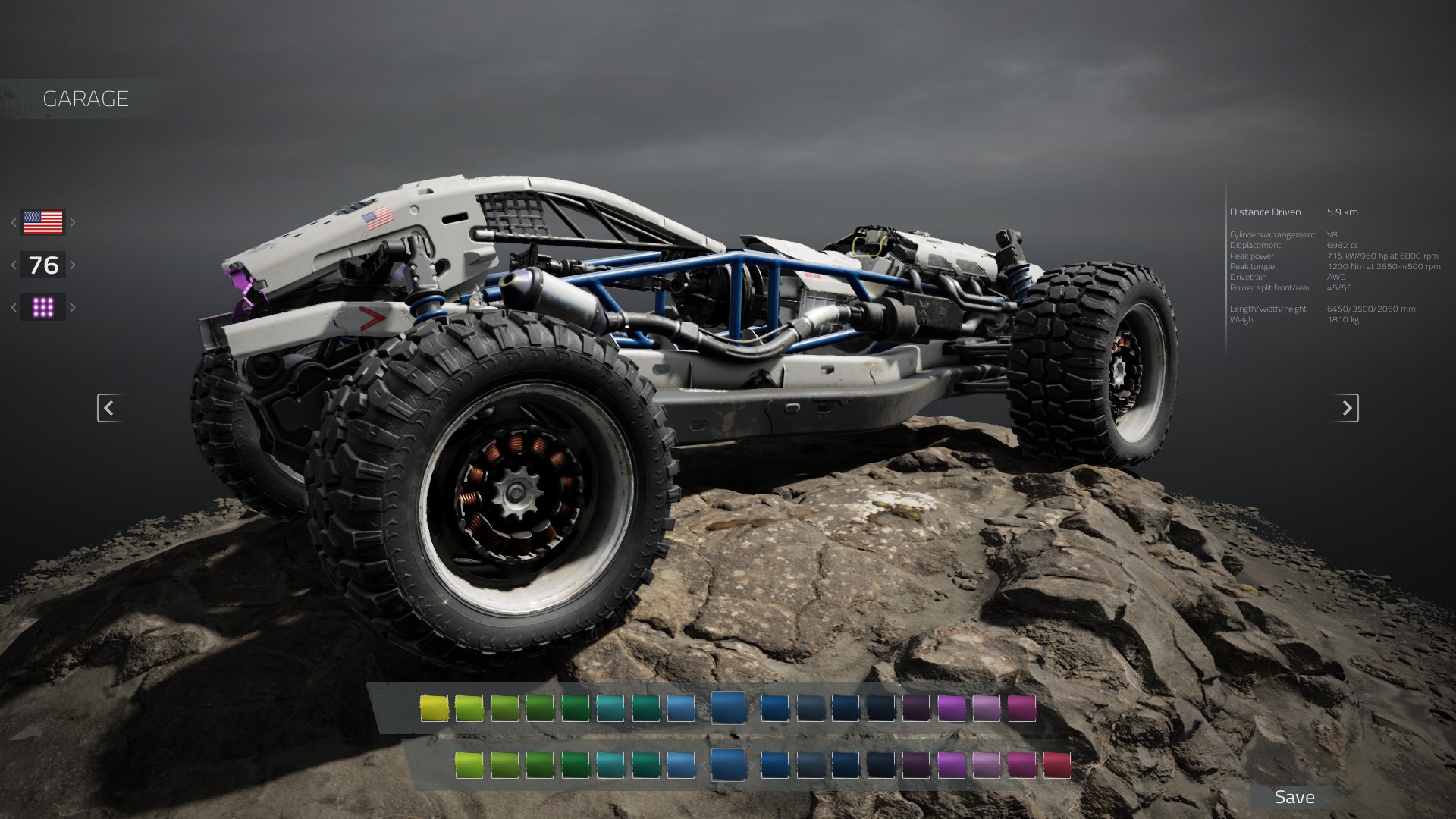
In Challenge Mode, the three zones (or maps) are divided into eight segments. The first seven take only a section of the map, where it generally takes 30 seconds or less to reach the finish line. The eighth is basically the entire course, taking about 1 minute and 15 seconds to make one lap. The goal here, is to try reach the finish line as soon as possible. And believe me, trying to make it under 30 seconds is going to be hard. Be prepared to grip your controller aggressively as you shout and curse over having to restart multiple times because you hit out of bounds, you lost a tire, you flew in the air, or you missed the curve. If it helps, you can try to see how to get ahead of your ghost player after you’ve finished a lap to see what you did wrong and what you can do to improve.
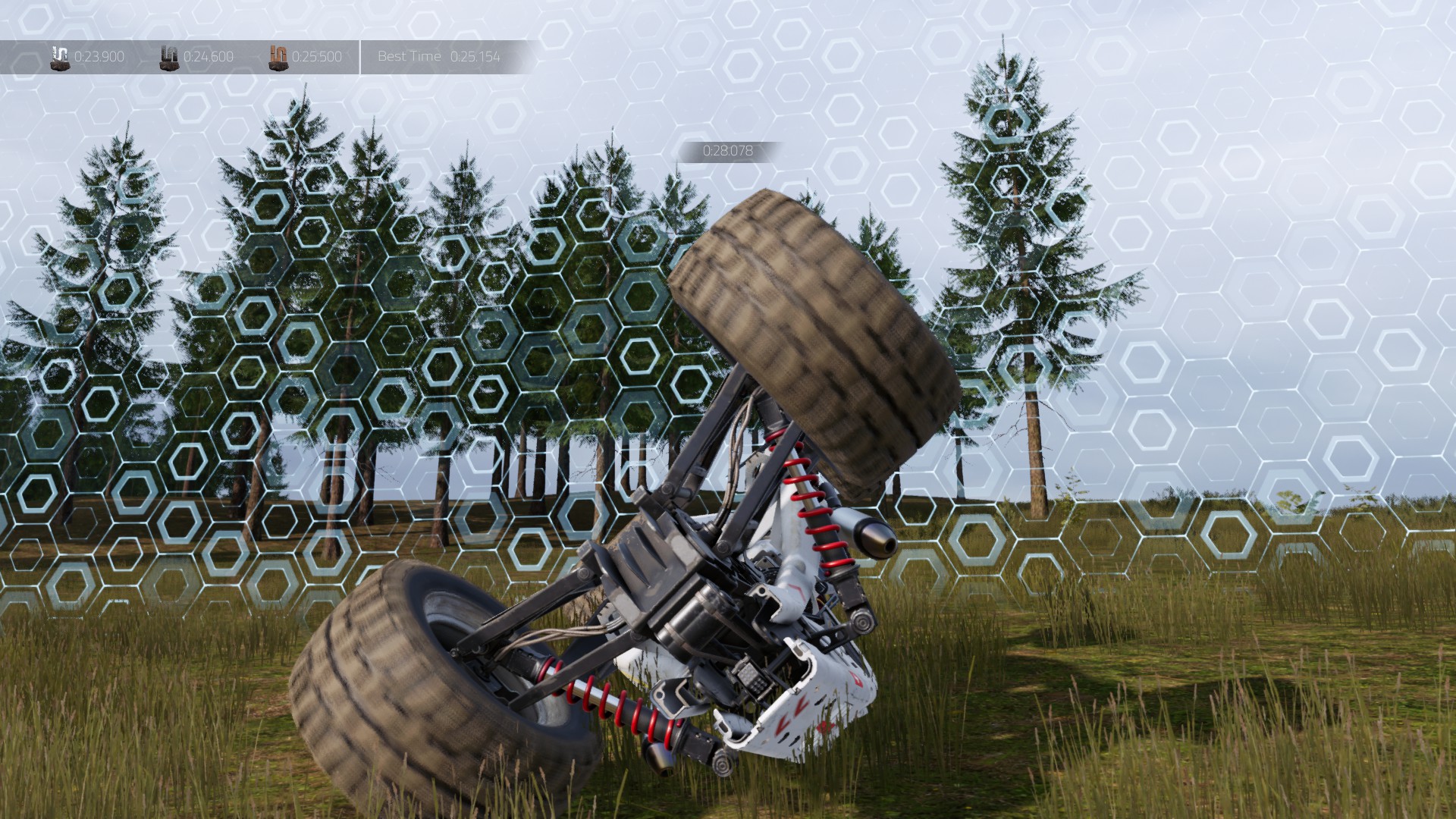
So let’s say one challenge requires a time of 29.5 seconds or less to get gold. Silver is 30.1 seconds, and bronze is 32.8. As random as these times are, and as little as they may be separated from the other, every millisecond counts. You will do whatever it takes to sacrifice just a slight tap on the brake for more gas, while risking to miss the turn, or find a better, more efficient way to make a drift as you combine the brake and the handbrake while tapping on the gas. It’s something where, as I mentioned earlier, you will need to get familiar with the course by driving it over and over again, while strategizing what you can do on the next run to shave just a hair of a second off.
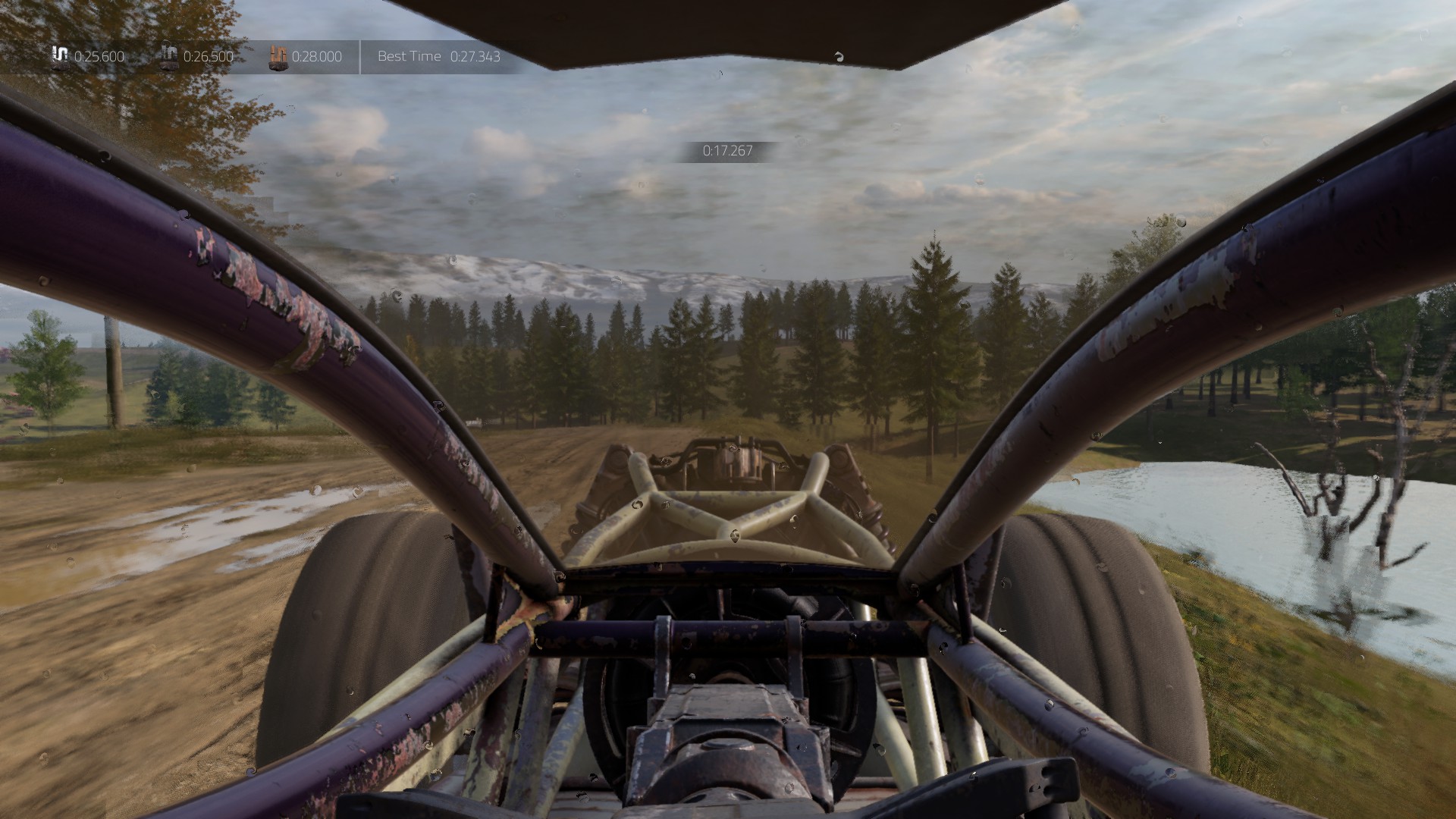
Besides Challenge Mode, there’s also Special Events. Similar to Challenge Mode, you race on a section of a particular zone and clear for the best time. Your time will be posted on an online leaderboard and your ranking will be presented after you clear the race. As you can see in the screenshot, I ranked #98 out of 170 racers in the current event. New events take place every couple of weeks.
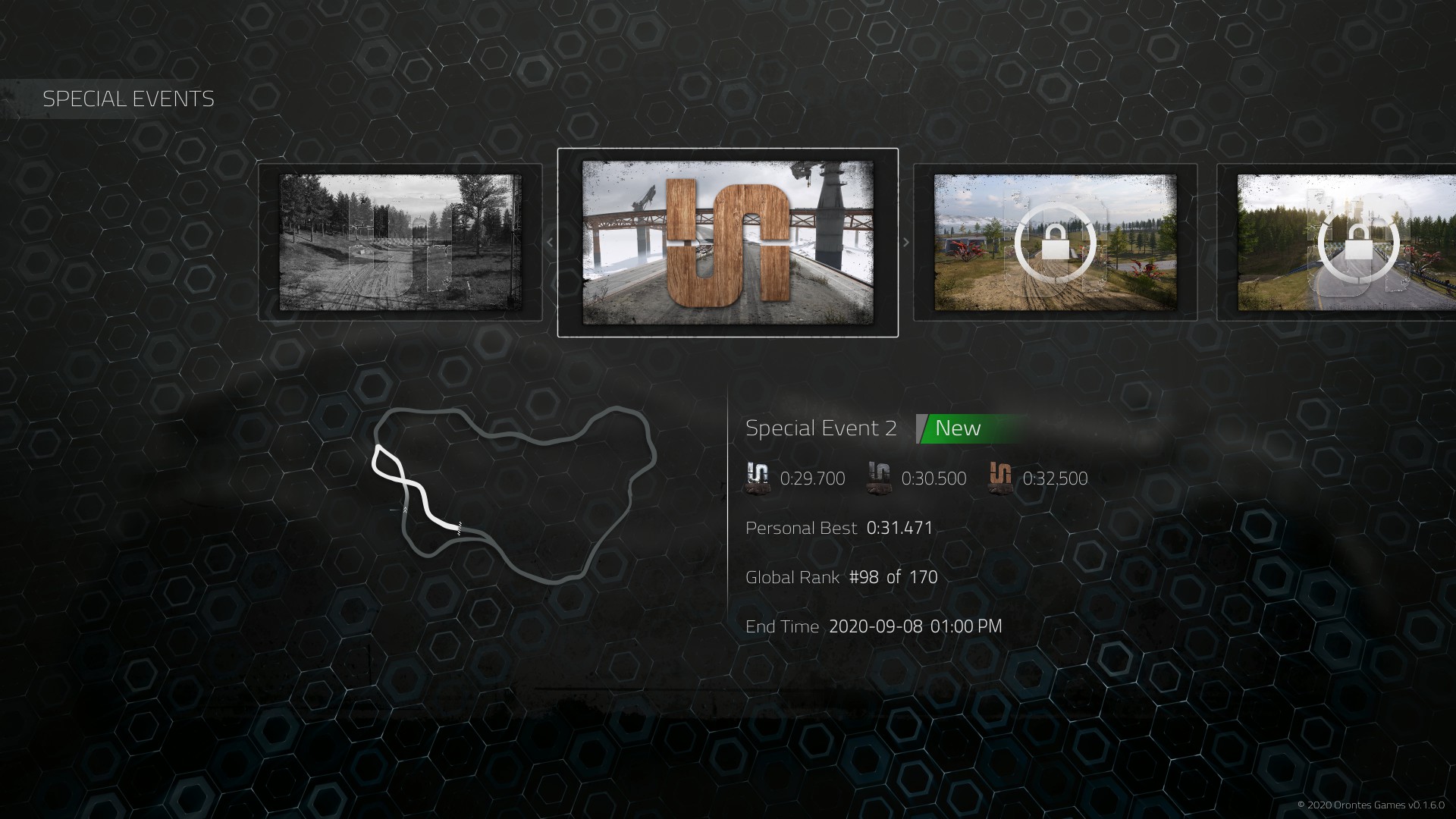
Time Trial is pretty self-explanatory: race against the clock on any of the currently available zones. Each zone is divided by how much track it covers, but most are the complete zone, with the second being an alternative route.
You can also play online against other players. As I haven’t been able to find anyone to play online with, I can’t really report on what the experience is like. There are only three people playing the game right now. I would probably have to give a holler on the DRAG Discord if I ever wanted to play an online match.
Your vehicles are customizable. Head over to the Garage to add a country flag decal, a custom number, a custom paintjob, and a custom back LED color. There’s a third vehicle in here that’s wrapped under a blanket; I wonder what it’s going to look like when the appropriate update comes around.
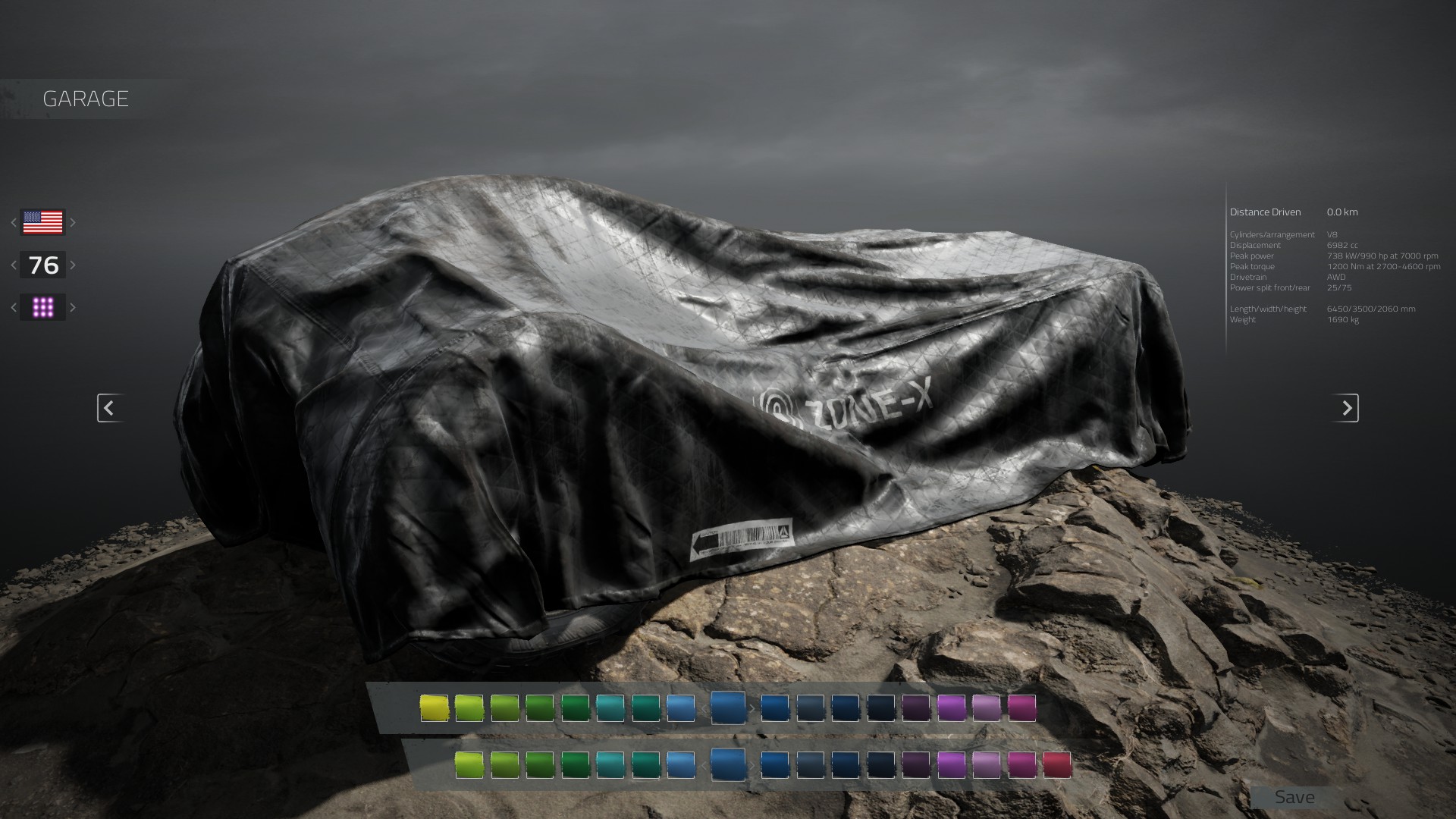
Theater Mode allows you to view the zones from different angles. These cutscenes are played before playing a zone for the first time in Challenge Mode.
Now let’s go over controls. There’s basic support for driving wheels. I plugged in my Logitech G29. While there was no force feedback, the wheel worked after mapping the controls in the Settings menu. This is definitely something I want to see more support for in the future; a racing simulator isn’t really complete without a driving wheel!
Finally, let’s view the credits. Here you go:

This is something where you’re not actually holding the analog stick down to quickly scroll through a long line of credits. This is all there is to it, folks. The engine was created by Christian Folkers, the art was done by his brother Thorsten. Together, they formed Orontes Games. Some other people are attributed for sound, music, and ground foliage, but other than that, these two brothers got the bulk of the work done.
Though I won’t get into too much detail regarding the development of this game, it’s noteworthy these two brothers started this project way back in 2001. That means nearly 20 years of on and off work; the last three of which they have been working on the engine full-time.
I’m having a hard time trying to wrap that around my head.
If we go by their first post of their development log on Polygon, the brothers were 30 and 28 in 2017, meaning they’re 33 and 31 now, respectively. So they started the development of the engine around the age of 14 and 12.
Another mind-boggling thing to contemplate.
The engine was built on Linux (if I recall correctly, on Fedora specifically), and the art assets were made on Windows. The benefit of having their own engine, is that they can make the physics of the vehicle as complicated or as simple as they need to, and I have to say, they definitely did their job trying to simulate the realism of driving an off-road race car.
How does the game run? Beautifully. That’s kind of pointless to say, seeing as the engine was developed natively on Linux. It has graphics that are comparable to other modern-day racers, such as Project CARS and DIRT 4. It already has some cool touches, such as when your car drives over a puddle, your HUD will temporarily be sprinkled with drops of water. It uses OpenGL 4.5 as the backend; Vulkan is planned to be supported in the future. You definitely don’t need more than 8 GB RAM to run this, and you certainly don’t need anything as beefy as a 1660.
Now the asking price. Is it worth the $35 price tag? Frankly, I feel like for what you’re getting right now, it’s a bit steep. I do understand this is a custom, homemade engine, and that it took years of hard work, blood, sweat, and skin to get to the point where they are now, but if you’re on a budget, you may want to wait a couple of months for more content to arrive. It’s kind of barebones right now; the foundation is there but other than trying to get a handle on how the vehicles drive (which, mind you, will certainly require a good investment of your time and patience) there’s not much to explore, especially since the online community is sparse.
I will say, though, I have never seen so much care put into a game for Linux. It’s incredibly well-optimized, the engine was made on Linux itself…I definitely wanted to show my support for these brothers. If you also want to show Linux support with your wallet, DRAG is certainly something you may want to keep on your radar.
